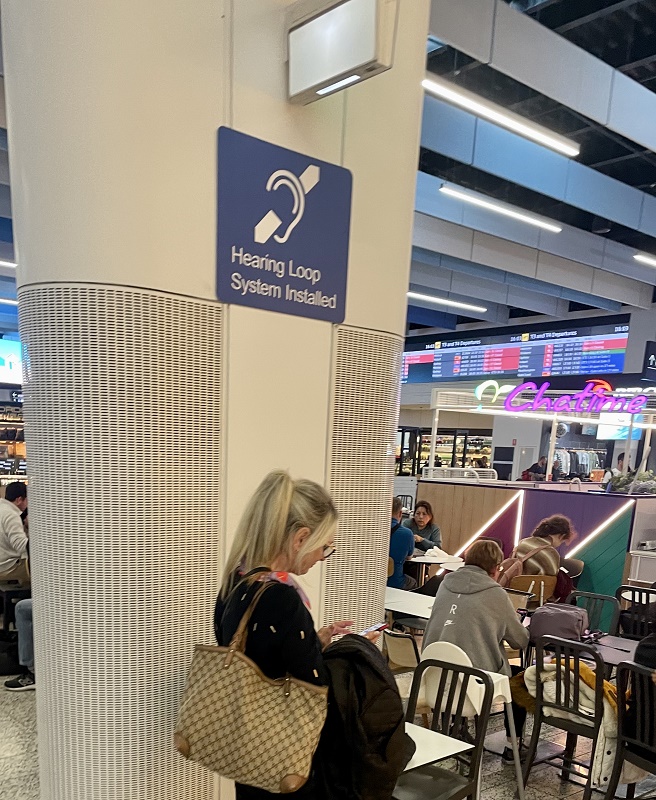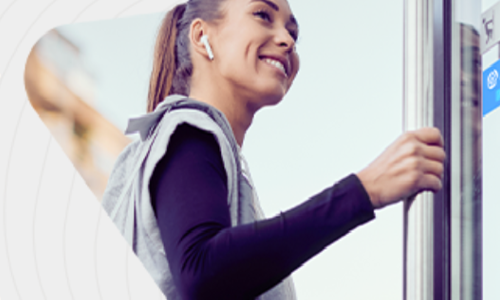We all dream of the day when we can walk into any venue, public space, or theatre and connect our hearing devices seamlessly to the sound system. No need to pick up listening devices with neckloops, extra streamers or delayed audio. No hassle. Only clear sound is transmitted directly to our existing technology.
By Shari Eberts for Hearing Matters.
Auracast believes this day is coming—not just for people with hearing devices—but for the mainstream. Auracast is a new Bluetooth technology that allows users to tap into any Auracast-equipped sound system for better hearing. The receiving device does not matter. It will work with Auracast-equipped hearing aids, cochlear implants, and everyday wireless headphones. When fully rolled out, it could be used for customised sound at a movie theatre, a lecture hall or even to share the song you are enjoying with a friend.
I had a chance to try it out at the International Federation of Hard of Hearing People 2022 World Congress, and it was encouraging. The delay between when the sound is picked up by the microphone and the processed signal is played back is far superior to standard Bluetooth. This could help turn many everyday listening devices including our smartphones into hearing enhancers.
Over time, as Bluetooth shifts to its new Auracast version, we may no longer need both Bluetooth and T-coil. Progress like this is wonderful – the more hearing technology goes mainstream, the better for people with hearing loss – but in the eagerness to move forward, let’s make sure nobody is left behind.
Telecoils will remain a required feature for now.
The industry must continue to support both technologies during the transition period – which may last 5 to 10 years. Auracast is exciting and provides many potential benefits for people with hearing loss. But many of these benefits are likely years away as the technology is fine-tuned, and the full range of Bluetooth devices and public venues transition to this new model.
For now, T-coils remain a critical accessibility tool for people with hearing loss. Let’s hope the industry is taking note.
Shari Eberts is the founder of Living with Hearing Loss.
The International Hearing Access Committee – members include the International Federation of Hard of Hearing People, the Hearing Loss Association of America and the European Federation of Hard of Hearing – says “The rights of hearing aid and cochlear implant users to access (hearing loops) must be continued and maintained during this period of technological change and shall not be compromised by the promise and overly optimistic expectations of a future technology development.”
The Australian Government Hearing Services Program.
Under the Commonwealth Department of Health and Aged Care’s Hearing Services Program, a hearing services provider is required to offer you a hearing device which has a telecoil in the first instance – a large number of the fully subsidised hearing devices have a telecoil fitted.
You can then choose a device without a telecoil if you wish. Your hearing clinic can talk to you about how to use the telecoil feature on your hearing device.

The International Deafness Symbol shows that a hearing loop has been installed in a public place.

